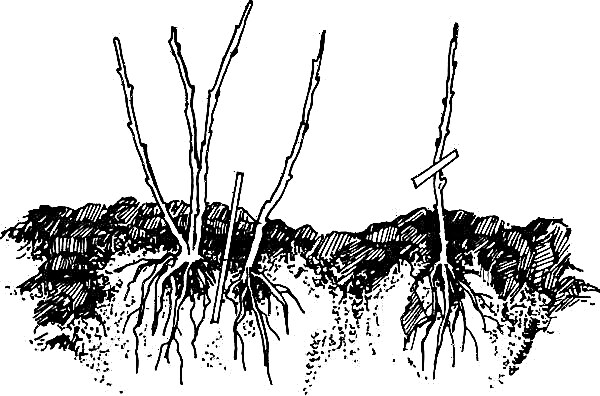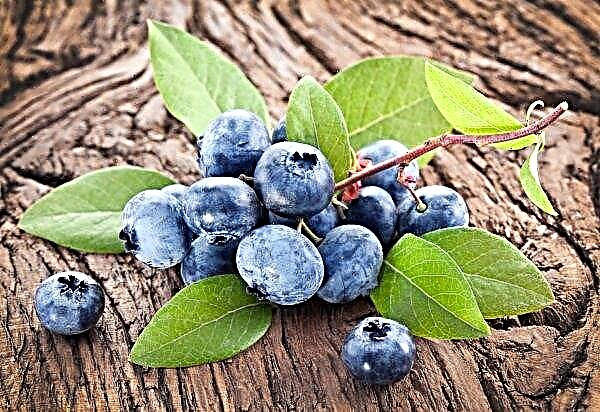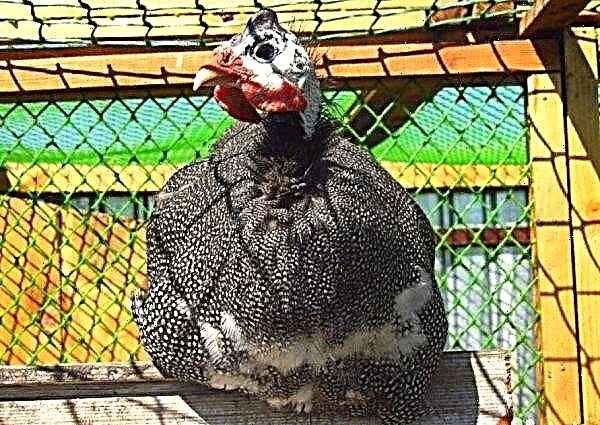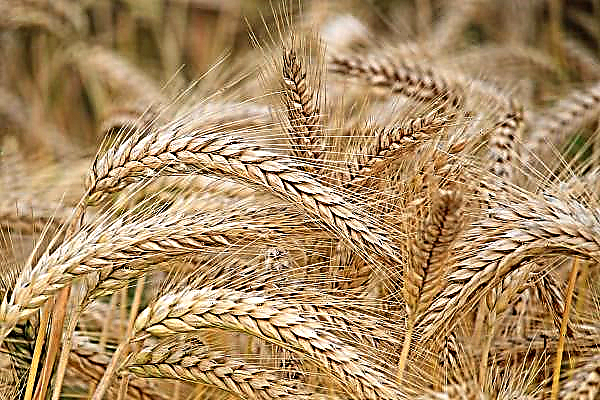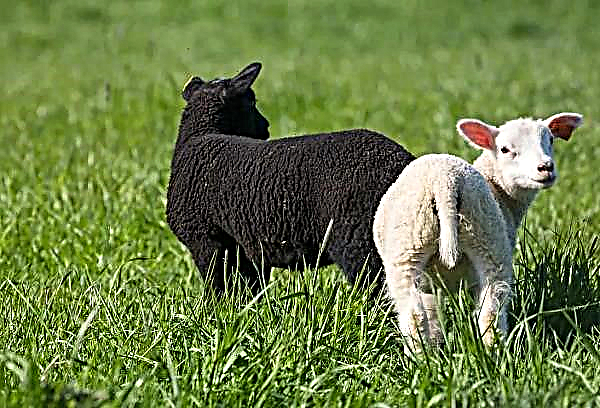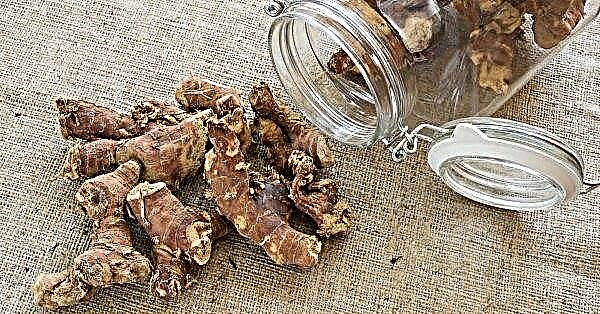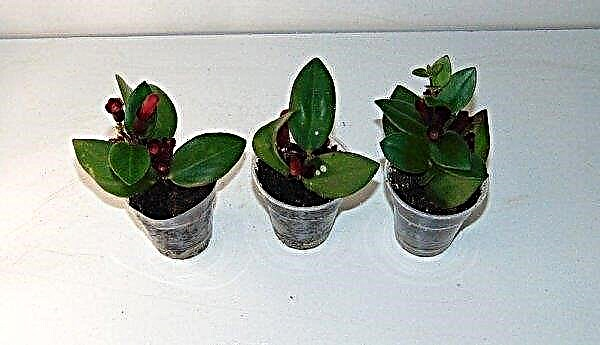Lentils - one of the oldest legume cropsfamiliar to humanity. Today on store shelves you can see different types of product. Which of the cultural varieties is more useful, and is there any difference between them? This is the topic of today's article.
What is lentils and what's the difference
In the post-Soviet space, green lentils are better known. However, there are several more varieties.
To understand if there is a big difference between them, acquaintance with their description will help:
| Type of Lentils | Description |
| Black | Small, no more than 3 mm in grain diameter, with a smooth surface. The view does not require soaking during cooking, it boils for 20–25 minutes, after heat treatment it retains its shape. Grown in Canada and the USA. |
| Green | A variety that is popular for growing in Russia. The shape of the seeds resembles a plate, the size is 4–9 mm in diameter, depending on the variety. Color can vary from light green to dark olive. After cooking, retains its shape. |
| Yellow | These are varieties of green lentils without a shell, taken by grinding grain. Prepares for 15 minutes. Popular in India and Asian countries. |
| Brown | Covered, grains are flat, on average 5–7 mm in diameter. It is popular in the Mediterranean countries. It needs to be soaked, it has a hard shell. |
| Red | Convex, round in shape, about 3 mm in diameter. Red lentils are called "Egyptian" for their popularity in this country. The color of the grains may be pale red or saturated orange. It cooks quickly, without soaking. |
What is the benefit
A large number of different substances are collected in lentils. Grains contain omega-3 and omega-6 fatty acids important for the body, In small quantities, essential and essential amino acids are present.
Did you know? For a bowl of lentil stew, the character of the Old Testament Esau gave his birthright.
Bean seeds are rich in such elements:
Vitamins:
- thiamine (B1);
- riboflavin (B2);
- choline (B4);
- pantothenic acid (B5);
- pyridoxine (B6);
- folic acid (B9);
- nicotinamide (PP).

Minerals:
- potassium;
- silicon;
- magnesium;
- sulfur;
- phosphorus;
- iron;
- cobalt;
- manganese;
- copper;
- molybdenum;
- selenium;
- chromium;
- zinc.
This composition determined the beneficial properties of lentils for various body systems. B vitamins are especially important for the central nervous system and metabolic processes of the body. Due to the presence of these elements, the body can resist stressful situations, process incoming food into energy. B4, B5, B6 - These are vitamins responsible for the work of the brain, the production of hemoglobin and red blood cells.
Substances are responsible for the normal transmission of nerve impulses to cells, tissue and cell regeneration. Choline regulates blood sugar, thiamine and riboflavin are participants in the metabolism of fats, support healthy skin and hair.
Due to the presence of a large number of macro- and microelements, the product has the ability to stimulate blood formation, helps regulate cellular respiration, and contributes to the normal development of bone tissue. Legumes are especially useful for children: the product saturates the body with the elements necessary for the growth and development of the skeleton. Regular use by adults will prevent osteoporosis.
Did you know? On the walls of the tomb of Rmesmes II, archaeologists have discovered recipes for lentil stew, as well as leftovers from lentil flour among funerary objects.
Most types of grains contain enough fiber to positively affect digestion. Beans help remove toxins from the body and the breakdown products of drugs and toxins. The soft action of fiber maintains normal intestinal microflora and eliminates constipation problems. In addition to fiber, the product contains the necessary nutrients that saturate the body with energy.

Nutritional value per 100 g of product:
- proteins - 24 g;
- fats - 1.5 g;
- carbohydrates - 46.3 g;
- fiber - 11.5 g;
- calorie content - 295 kcal.
Which lentil is healthier
A different amount of certain elements in the types of lentils affects their beneficial properties. For instance:
- Green grains are the leader in protein content, which is appreciated by athletes and people with hard physical work. In addition, the green species is a champion in the content of phosphorus, and this is the strength of bone tissue, cell growth and normalization of muscle contractions. Phosphorus is an important element in the body's assimilation of many vitamins.

- The red appearance is characterized by a high content of iron and potassium. The product is a prophylaxis of anemia, as it helps to increase hemoglobin. Iron - a participant in the metabolic process of proteins, helps to improve metabolism. Potassium deficiency leads to jumps in blood pressure, increases the risk of stroke, impairs the transmission of nerve impulses.

- Yellow culture contains one of the beauty vitamins - retinol, as well as carotene. Both elements support the function of vision, relieve fatigue and irritation of the mucous membrane of the eyes. Vitamins are needed for the health of the skin, nourish skin cells, delay the aging process.

- Brown bean grains contain a lot of silicon, copper and zinc. These minerals are involved in the formation of collagen and elastin, which strengthens bone, cartilage and connective tissue, improves the flexibility of muscle tissue. Elements help break down toxic and carcinogenic substances, as well as uric acid. The product is most useful for problems with the musculoskeletal system.

- Black lentils contain vitamin E and are the leader in the amount of zinc. The tandem of the two elements has a good effect on the functioning of the endocrine, reproductive and nervous systems. Black grains are recommended for problems with conception, the thyroid gland.

Benefits for men and women
- Regular use of the product provides invaluable benefits to women's health. Its composition has the following actions:
- Promotes the rejuvenation of the body at the cellular level.
- Improves the condition of the skin, hair, nails.
- It normalizes the menstrual cycle, reduces the symptoms of PMS, and helps with heavy bleeding.
- Helps in conception, improving blood circulation to the pelvic organs, ovaries and uterus. Promotes the development of healthy eggs.
- Delays menopause, with menopause, reduces the manifestations of its symptoms.
- Improves the process of lactation.
Important! In the autumn-winter period, lentil dishes will strengthen the immune system, reducing the risk of colds and diseases of the nasopharynx and respiratory system.
- No less beneficial consequences of regular consumption of lentils for men's health:
- It nourishes with energy and helps to restore strength after playing sports or hard physical work.
- Cleanses the body of toxins: nicotine and alcohol, supports liver function.
- It improves the functioning of the hormonal system, namely: the production of testosterone and other male sex hormones.
- Supports potency at the age of 40-50 years.
- Improves sperm quality and reproductive function in general.
Application in traditional medicine
In folk medicine, a bean product is used both externally, in the form of compresses from gruel, and internally, in the form of infusions and decoctions.
Lentils help in the treatment of such diseases:
- asthma;
- gastrointestinal tract disorders;
- food poisoning;
- constipation;
- liver disease
- diabetes;
- burns;
- skin diseases;
- atherosclerosis;
- anemia;
- blood diseases.

What is the tastiest
Determining the most delicious type of bean product is problematic, because people have different tastes.
However, everyone will be able to choose and buy what suits him best, having tasted multi-colored grains to taste:
- black - spicy and tender;
- green - rich bean, creamy texture;
- yellow - with a nutty flavor;
- brown - nut-mushroom aftertaste;
- red or orange - with a soft point, the texture is delicate.

Contraindications
Legumes, including lentils, can cause bloating and heaviness in the stomach. To prevent this, you need, firstly, not to abuse the product, and secondly, to eat vegetable salad in front of bean grains: this will speed up the digestion of beans.
Important! Legumes are not recommended for children under 3 years of age: their enzymatic system is not ready to digest heavy foods.
- The use of the product is contraindicated in the following conditions:
- acute form of gastrointestinal diseases;
- uric acid diathesis;
- gout;
- kidney disease.

Thus, lentils must be included in the diet, because all its types, one way or another, are useful and tasty. Which one to prefer is a personal matter for everyone.







